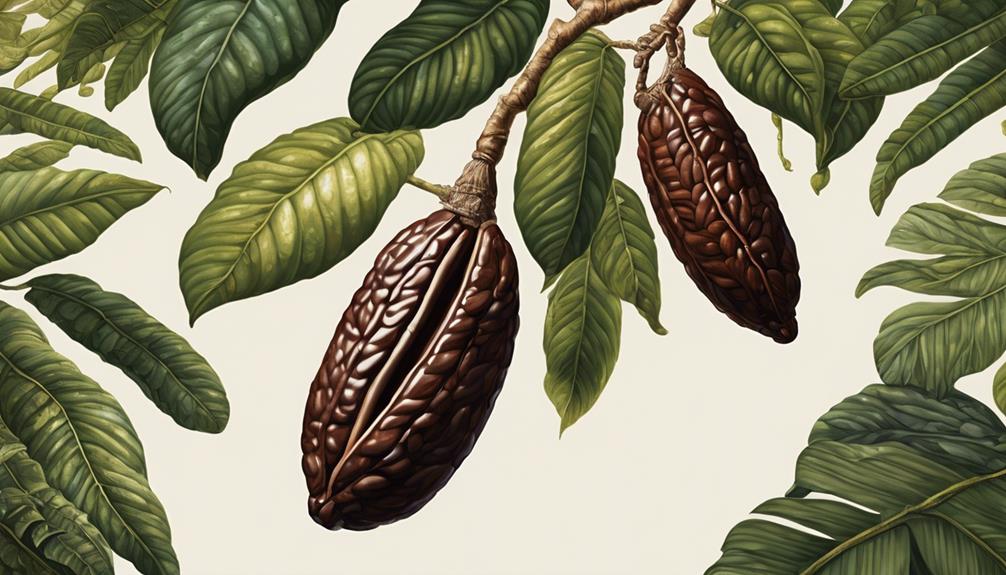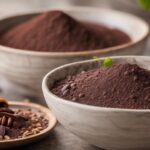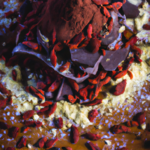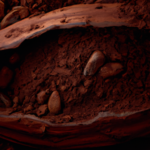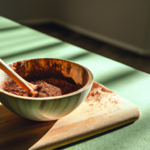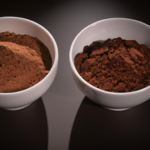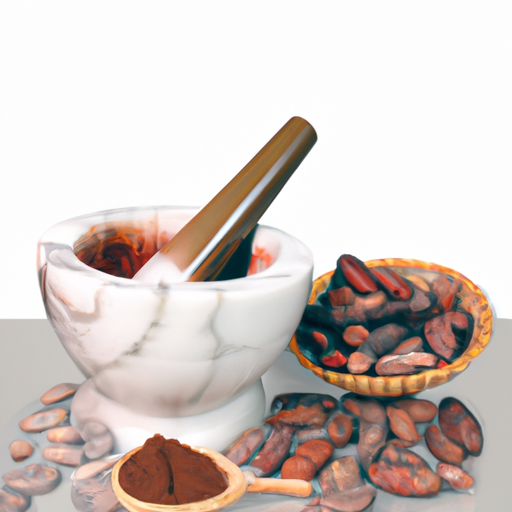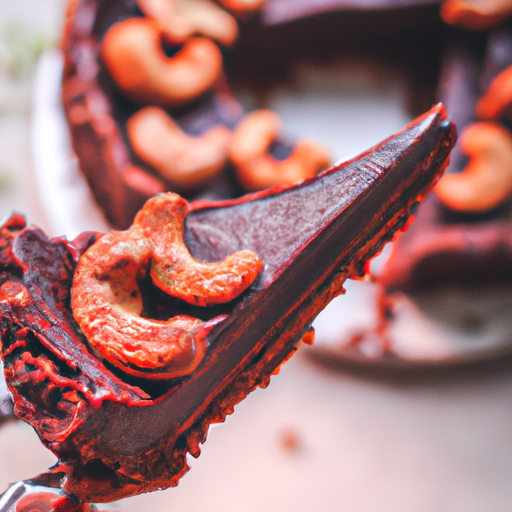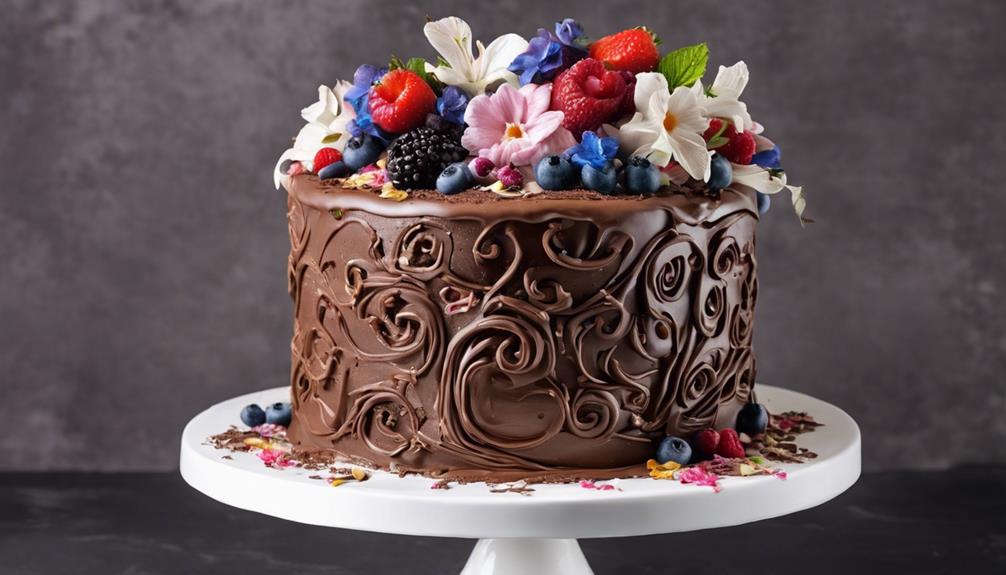Pure cacao is known for its special combination of powerful antioxidants, crucial minerals like magnesium, iron, and copper, and flavonoids that improve heart health and brain function. The antioxidants fight against oxidative stress, the minerals aid in different bodily functions, and the flavonoids contribute to a healthy heart. Exploring deeper into the properties of pure cacao unveils a wealth of health benefits just waiting to be explored.
Key Takeaways
- Pure cacao is a rich source of flavonoids and polyphenols, potent antioxidants.
- Cacao's antioxidant capacity exceeds that of superfoods like blueberries.
- Essential minerals like magnesium, iron, and copper are abundant in pure cacao.
- Flavonoids in cacao lower blood pressure and enhance insulin sensitivity.
- Cacao's unique blend of antioxidants and minerals provides multifaceted health benefits.
Health Benefits of Pure Cacao
Indulging in pure cacao offers a myriad of health benefits that can positively impact overall well-being. Dark chocolate, made from pure cacao, is packed with antioxidant properties that help fight inflammation and support cardiovascular health. These antioxidants, specifically flavonoids, play an important role in reducing the risk of chronic diseases and promoting a healthy heart.
Additionally, pure cacao is a rich source of essential minerals like magnesium, iron, and copper, which are important for various bodily functions. The flavonoid content in dark chocolate not only aids in improving blood flow and lowering blood pressure but also enhances cognitive function and mood.
Rich Antioxidant Content
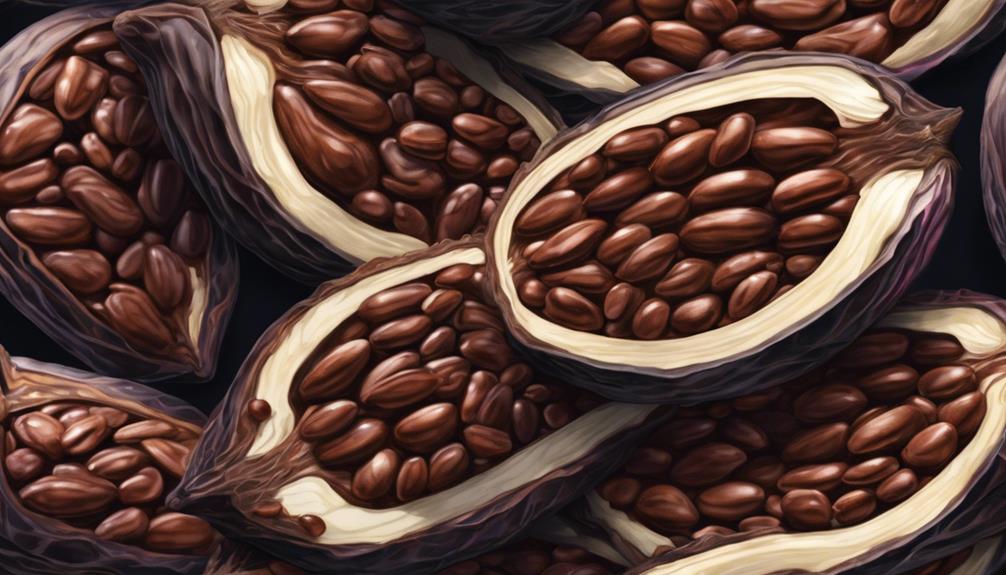
Shifting from the conversation about the health advantages of pure cacao, the abundant antioxidant content discovered in pure cacao plays an essential role in fostering overall well-being. Cacao beans are packed with antioxidants like flavonoids and polyphenols, which are powerful compounds that combat oxidative stress, a major contributor to various diseases. These antioxidants act as warriors within our bodies, protecting our cells from damage caused by harmful free radicals. In fact, the antioxidant capacity of pure cacao surpasses that of many other well-known superfoods like blueberries, acai berries, and even red wine.
To highlight the significance of antioxidants in pure cacao, let's take a closer look at their incredible benefits in the table below:
| Antioxidant | Role |
|---|---|
| Flavonoids | Lower blood pressure, improve insulin sensitivity |
| Polyphenols | Reduce risk of heart disease, inhibit cancer cell growth |
| Catechins | Promote better blood vessel function, decrease oxidative stress |
Consuming pure cacao not only satisfies your sweet cravings but also supports your heart health and overall well-being.
Essential Mineral Powerhouse
Rich in essential minerals like magnesium, iron, copper, and potassium, pure cacao stands out as a powerhouse of important nutrients important for peak bodily functions. When it comes to minerals, cacao is a true gem, offering a variety of benefits that support overall health and well-being.
- Magnesium Magic: A single ounce of pure cacao can provide around 25% of your daily magnesium needs. This mineral is essential for muscle function, energy production, and even helps with relaxation and sleep.
- Iron Boost: Iron found in pure cacao supports the formation of red blood cells and aids in transporting oxygen throughout your body. With approximately 15% of your daily iron needs in just one ounce, cacao helps keep your energy levels up.
- Copper Connection: Cacao contains copper, which is important for iron absorption and plays a role in collagen production. Copper supports skin health, tissue repair, and overall body functioning.
Heart Health Support

With its abundance of flavonoids, particularly flavanols, pure cacao offers significant support for heart health. These compounds found in cacao powder play an important role in promoting cardiovascular wellness by improving blood vessel function and reducing the risk of heart disease.
The antioxidants present in cacao help combat inflammation, enhance circulation, and lower blood pressure, all of which contribute to a healthier heart. By regularly consuming cacao, you're not only indulging in a delicious treat but also potentially reducing your risk of cardiovascular diseases.
The polyphenols in cacao are known to protect against heart-related issues and improve endothelial function, which is essential for maintaining ideal blood flow and preventing complications. The unique combination of minerals, antioxidants, and flavonoids in pure cacao makes it a powerful ally in supporting heart health and overall well-being.
Anti-inflammatory Properties
Pure cacao's anti-inflammatory properties are key in reducing inflammation naturally within the body. These benefits can help combat oxidative stress and promote overall well-being by supporting immune function.
Incorporating pure cacao into your diet can contribute to a balanced inflammatory response and potentially lower the risk of chronic diseases.
Reducing Inflammation Naturally
How can the unique compounds found in cacao help naturally reduce inflammation in the body?
- Consuming cacao rich in polyphenols and flavonoids can combat inflammation effectively.
- The flavonoids in cacao inhibit inflammatory markers, lowering the risk of chronic inflammation-related diseases.
- Studies suggest cacao can alleviate symptoms of inflammatory conditions like arthritis, asthma, and cardiovascular diseases.
Including pure cacao in your diet, either in its raw form or as dark chocolate with high cacao content, may provide natural relief from inflammation.
Cacao's anti-inflammatory properties, especially compounds like epicatechin, play an essential role in modulating immune responses and reducing inflammation throughout the body. Embrace the benefits of cacao to support your overall health and well-being.
Cacaos Anti-Inflammatory Benefits
Cacao's rich content of epicatechin provides important anti-inflammatory properties that can effectively reduce inflammation in the body. Epicatechin, a flavonoid found in cacao, works by inhibiting inflammatory pathways, which not only helps in lowering levels of inflammatory markers but also contributes to improved cardiovascular health.
By incorporating cacao into your diet, you can potentially reduce the risk of chronic diseases by harnessing its anti-inflammatory benefits. Studies suggest that the significant effects of cacao play an essential role in protecting cells from damage, promoting overall health, and supporting general well-being.
Embracing cacao as part of your daily routine may lead to a healthier and more vibrant life, thanks to its remarkable anti-inflammatory properties.
Potential Cancer-fighting Benefits
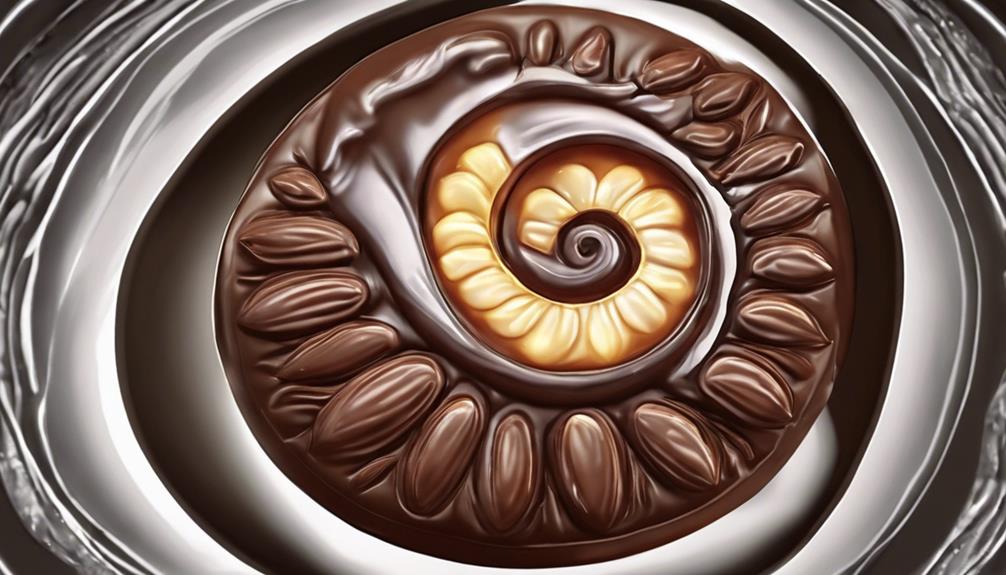
Rich in antioxidants like polyphenols and flavonoids, cacao exhibits promising potential in fighting cancer through various mechanisms.
- The flavonoids in cacao may help inhibit the growth of cancer cells, reducing the risk of certain types of cancer.
- The theobromine in cacao has shown promise in inducing apoptosis in cancer cells, contributing to its potential anti-cancer effects.
- Cacao's high content of antioxidants can neutralize free radicals that may contribute to cancer development.
Imagine tiny soldiers inside cacao, armed with powerful weapons to protect your body from harmful invaders. These soldiers, the antioxidants and flavonoids, work tirelessly to stop cancer cells from growing and spreading. Additionally, the theobromine acts like a superhero, causing cancer cells to self-destruct.
Blood Sugar Regulation
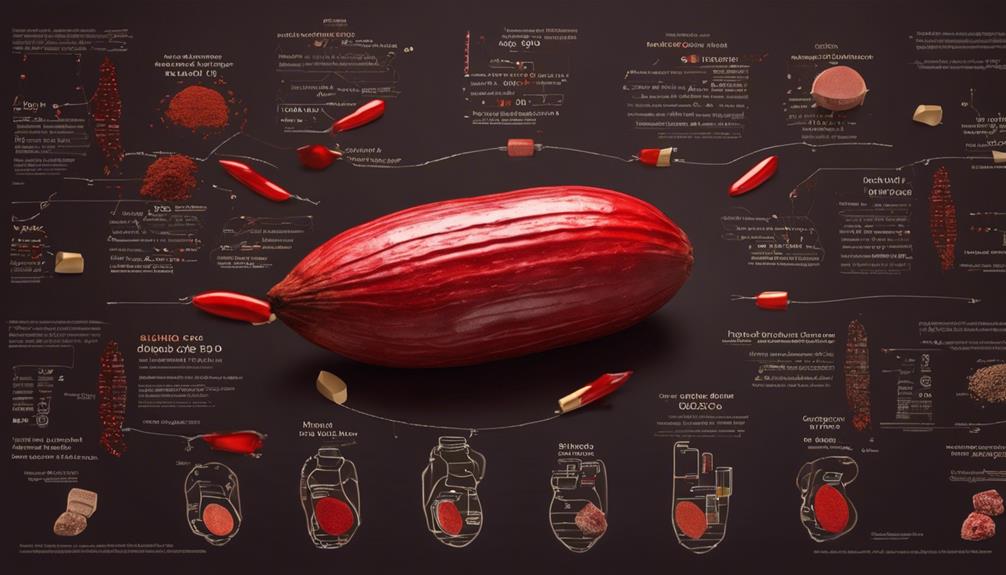
With its high magnesium content supporting insulin function, pure cacao shows potential in regulating blood sugar levels effectively.
The flavonoids present in cacao can enhance insulin sensitivity, helping to improve blood sugar control.
Including pure cacao in your diet, especially in the form of dark chocolate with high cacao content, may assist in preventing sudden spikes in blood sugar levels.
Studies suggest that cacao flavonoids play a role in enhancing the uptake and utilization of glucose by cells, which can contribute to maintaining balanced blood sugar levels over time.
By incorporating moderate amounts of pure cacao into your diet, you may support overall blood sugar regulation and management.
Red Blood Cell Maintenance
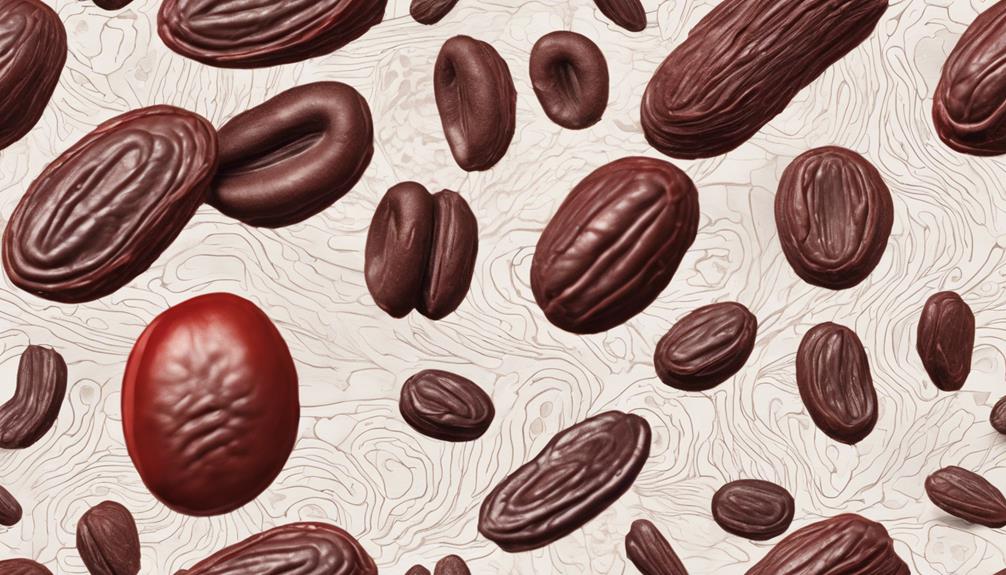
I regularly consume pure cacao as part of my diet to support the maintenance of healthy red blood cells and prevent issues related to iron deficiency. Pure cacao, rich in iron, is crucial for red blood cell production and oxygen transport in the body.
Here are some key points to keep in mind:
- Iron in cacao supports the synthesis of hemoglobin, the protein that carries oxygen in red blood cells.
- Anemia, a condition resulting from iron deficiency, can lead to fatigue and decreased red blood cell count, which cacao can help prevent.
- Including cacao in your diet can naturally aid in maintaining healthy red blood cell levels and overall blood oxygenation.
Frequently Asked Questions
What Is Special About Cacao?
Cacao is unique because of its rich flavonoids that decrease inflammation and support heart health. The theobromine in cacao offers gentle energy without caffeine jitters. Additionally, it includes essential minerals like magnesium, iron, and potassium for overall well-being.
Why Is 100% Cacao Good for You?
Eating 100% cacao benefits me by providing antioxidants and minerals for my health. It boosts brain function and is low in sugar, making it a smart choice. I can enjoy its rich flavor in various dishes.
How Can You Tell if Cacao Is Pure?
When I check if cacao is pure, I look for a label that boldly screams "100% cacao," ensuring no sneaky additives. The rich, intense flavor with a hint of bitterness is a telltale sign of unadulterated cacao goodness.
What Is the Difference Between 100% Cocoa and Cacao?
When comparing 100% cocoa and cacao, the key difference lies in their processing. While 100% cocoa contains only cocoa solids with no added sugar, cacao refers to minimally processed products from cacao beans, offering higher nutrient content.
What Makes Pure Cacao Powder Unique Compared to Other Superfoods?
Pure cacao powder stands out among other superfoods due to its exceptional health benefits. With high levels of antioxidants and essential minerals, the benefits of cacao powder include improved heart health, enhanced mood, and increased energy levels. Its unique nutritional profile makes it a valuable addition to any diet.
Conclusion
To sum up, pure cacao is truly a superfood with a multitude of health benefits. From its rich antioxidant content to its essential minerals and heart health support, cacao is a powerhouse of nutrition.
Its anti-inflammatory properties, potential cancer-fighting benefits, and ability to regulate blood sugar make it a must-have in any diet. So next time you reach for a snack, consider indulging in some pure cacao for both your taste buds and your health.

